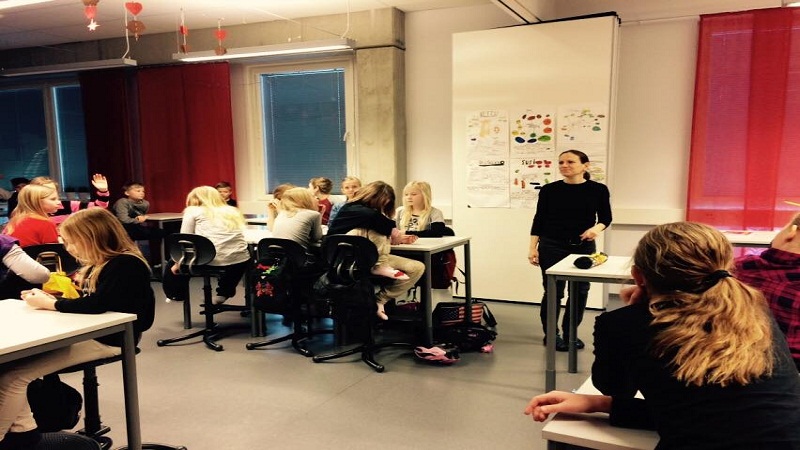We know that study languages can be an expensive option. And for this reason it is good to know which are the grants and the main scholarships that exist to study languages.
Best scholarships to study languages
The main scholarships to study languages are the following:
- Becas to study English. We can take a look at the ones offered by the Spanish Ministry of Education and Science. Or the MEC scholarships to study in summer, which are some of the most requested.
Other scholarships to study lesser-known English are the Fulbrigth program for graduate students and professors. As well as Stevenson for university students. Also, the Argo Global organization offers a scholarship program for graduates from all Spanish universities so that they can do internships abroad.
- Becas to study French. The Ministry of Education and Science also offers scholarships to study French. In the same way we find other aids with the well-known scholarships of excellence Eiffel that award the students that obtain the brightest notes. On the other hand, Campus France is a service offered by the French Embassy in more than 30 countries around the world. It facilitates the procedures to obtain scholarships to learn French or to study in France.
- Becas to study German. The MEC scholarships offer the possibility as well as within the European Erasmus program we also find help in the study of this language. Another option is to pay attention to the German Academic Exchange Service (DAAD). As it grants scholarships to study German to promote professional qualification in German research centers and institutes.
- Becas to study Italian. The grants for learning Italian are granted by the Italian Ministry of Foreign Affairs. They can be requested at the Italian consulate or embassy in your country. And are aimed at university students or higher education. In the same way the company Sprachcaffe offers language courses in Italy.
As you can see there are many scholarships available to study languages. So encourage and study, that learning a language is always worthwhile.
What are the most difficult languages to learn?
Are you curious to know which are the most difficult languages to learn ? Some like Mandarin Chinese, Russian or Japanese top the list of the ranking. Anyway, as you know , the difficulty of learning a language is subjective and depends on each person and their mother tongue. Their dedication and their desire to get into the knowledge of a new language.
What are the most difficult study languages to learn?
The 10 most difficult languages to learn have complex grammatical rules, a complicated vocabulary to memorize or non-phonetic writing.
The languages that are most difficult to learn and that we select in the following lines are:
- Mandarin Chinese. It is one of the languages spoken in the world, along with Spanish. And English, due to the size of the Chinese population, while more complex to learn . The complicated part of this language is that there are many regional differences. In fact, for those who have it as their mother tongue. It is difficult for them to communicate with other people from other areas. Mandarin contains 4 tones that differ only slightly in tone and enunciation. It also has a large number of homophones.
- Arabic. His writing is complex. Although its alphabet only contains 28 letters, all of them have four different forms, each of which can alter its pronunciation. And must be memorized. In the same way, its grammar is expensive to learn, since it uses a verb-subject-object format, instead of subject-verb-object to which we are accustomed.
- Japanese. A language that without a doubt is a challenge for those who want to study it. It has three writing systems and between 10,000 and 150,000 characters. The grammar and structure of sentences are not complicated to master. But their language implies a large vocabulary and a rigid hierarchical structure related to their culture.
- Ruso. Its complexity derives from its irregular grammar and its accents. Words are created in various ways and can completely change their meaning if a prefix or suffix is added. Added to this and to increase its complexity, the Russian has two pairs of consonants: flat and palatalized.
- It has 12 different cases in its grammatical structure, remember that a case is when a word modulates according to its use in the sentence.
- Korean. Its characters, denominated hanjas, are in their majority coming from the Chinese dialects. To function well in this language it is necessary to memorize 1000 hanjas. In addition, students in this language must pay special attention to certain patterns of expression to denote states.
- Cantonese Chinese. It has a high number of speakers in mainland China, Hong Kong, Macao and surroundings. Its difficulty derives from its multiple dialectic differences. And its wide vocabulary can intimate anyone the first days that he immerses himself in his learning.
- Hungarian. Like many European languages, Hungarian does not distinguish between genders. And is based on prefixes and suffixes to mark different meanings. It can be a bit heavy to learn because nouns can have up to 238 shapes depending on the inflection. Also, your students must deal with two conjugations, at least, of each verb and the structure of the sentences.
- Basqu According to many historians, Basque is one of the oldest languages of the European continent. It has evolved in isolation and does not share any connection with other languages from the Ind-European family. For their learning, it is necessary to know their changes in the basic vocabulary with a multitude of prefixes, infixes and suffixes.
- It is a language spoken on the island Sentinel led Nortel, a small island that belongs to the archipelago of the Andaman Islands in the Indian Ocean and administered by India. Since there are so few native people, there are no vocabulary lists and there are no serious studies about this language.







